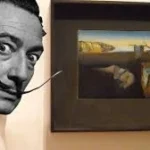
Catherine the Great, also known as Catherine II, ruled Russia as its Empress for the longest period of time (1762–1796). Princess Sophia Friederike Auguste von Anhalt-Zerbst-Dornburg was the daughter of Christian August and Johanna Elisabeth on May 2, 1729, in Stettin, Prussia. Despite being born a princess, Catherine’s family was not well off. When Catherine was ten years old, she met the man who would become her husband. She disliked him, and his name was Peter III. She had a solid background in history, religion, and foreign languages. After being forced to convert to Eastern Orthodoxy, Catherine wed Peter at the age of 16.
Interesting facts about Catherine the Great:
Catherine became known as Catherine the Great after she wed Grand Duke Peter of Russia.
When Catherine embraced Orthodoxy, she changed her name from Sophia to Catherine.
Based on her powerful ancestry, Catherine made her marriage decisions. She was viewed as a promising candidate for Peter when she was first introduced to Empress Elizabeth.
Catherine loved horses and spent a lot of time riding them in the early years of her marriage.
After getting married, it took Catherine and Peter eight years to have a child.
There were rumors that Sergi Saltykov, a Russian military officer, was the father of the infant Paul and that Peter was unable to conceive an heir.
The marriage between Catherine and Peter was not happy. Peter drank too much alcohol and frequently had mistresses.
Three children were born to Catherine and Peter during their marriage, but many people don’t think any of them were really Peter’s.
After Elizabeth’s death in 1761, Peter became king. With the aid of the strongest military assets in the nation, Catherine and Gregory Orlov (her lover) ousted Peter and took control of the throne.
By making Peter the sole ruler of Russia, Catherine coerced him into abdicating his throne as Emperor.
Peter was assassinated only a few days after he abdicated his throne. The murderer was a member of Catherine the Great’s conspiracy. She may have planned the murder, according to rumors.
Catherine the Great advocated for the abolition of torture and the death penalty in a document titled the Nakaz because she believed in social reform and equality.
There were over 12 revolts that took place under Catherine’s rule. Armed peasants and Cossacks revolted in 1773, but Catherine put an end to it and executed their leader Emelyan Pugachev.
A large number of books, pamphlets, and educational materials were written by Catherine the Great. She aimed to make the educational system better.
The Winter Palace in St. Petersburg, Russia, is home to Catherine the Great’s collection of artwork.
Paul, Catherine’s son and heir apparent, and she were not particularly close. She preferred Alexander to be the heir to the throne, but she passed away before her preferences could be put into effect.
Catherine never left Russia after she wed Peter. She ordered certain areas of the Winter Palace to be decorated to resemble locations and works of art she would never be able to see.
On November 17, 1796, Catherine the Great passed away at the age of 67, one day after having a stroke.







